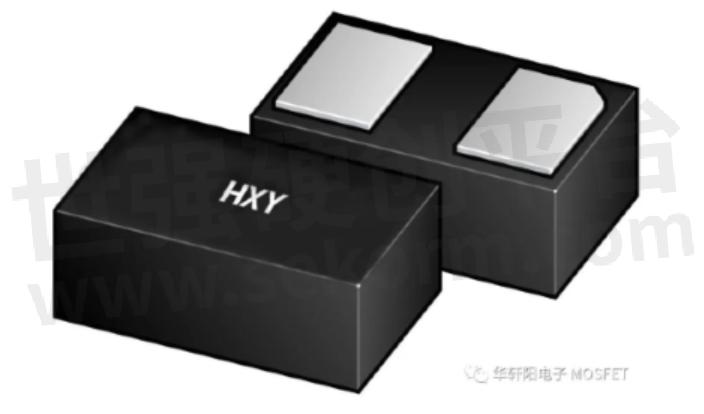Selection Recommendations for ESD Devices

Introduction:
ESD is one of the most common causes of failure in electronic components and circuit boards. When the human body or other charged objects come into contact with electronic components or circuit boards, a high voltage charge may be generated, forming an ESD discharge. ESD discharge can generate transient high voltages and high currents on electronic components and circuit boards, causing damage or failure of their electrical and mechanical properties, thereby reducing the reliability and stability of the system. In order to protect electronic components and circuit boards from ESD damage, ESD protection circuitry needs to be added to the circuit design. ESD protection circuits are usually implemented using ESD devices.


Selection steps:
1. Application scenario analysis
First of all, it is necessary to analyze the application scenario, clarify the electronic components or circuit boards that need to be protected, and understand their operating conditions, signal characteristics, power requirements, and other factors to determine the application scope and requirements of ESD devices.
2. ESD level
According to the ESD level requirements of the application scenario, select the appropriate ESD device. The ESD level refers to the amount of energy that the device can withstand the ESD discharge and is usually expressed in terms of the maximum ESD discharge voltage and the maximum ESD discharge current. ESD grades generally include the Human Body Model (HBM), Machine Model (MM), Charged Device Model (CDM), etc., of which HBM is the most widely used ESD level. HBM refers to the ESD discharge generated when the human body contacts the device, and its discharge energy is generally between 1kV~8kV. According to the ESD level requirements of the application scenario, select ESD devices that can withstand the corresponding ESD level.
3. Protect the direction
According to the protection direction of the electronic components or circuit boards that need to be protected in the application scenario, select the appropriate ESD device. The protection direction of ESD devices is divided into two types: unidirectional and bidirectional. Unidirectional ESD devices can only protect the forward ESD discharge in the circuit, while bidirectional ESD devices protect both forward and reverse ESD discharges. According to the protection direction of the electronic components or circuit boards that need to be protected in the application scenario, select the appropriate ESD device.
4. Package form
According to the size limitation and process requirements of the application scenario, select the appropriate ESD device packaging form. There are many package forms of ESD devices, such as SOT23, SOD323, SOD523, DFN, QFN, etc. It needs to be selected according to the actual application environment and requirements.
5. Working voltage
According to the operating voltage requirements of the application scenario, select the appropriate ESD device. ESD devices with different operating voltages have different parameters such as flyback voltage and protection current, which need to be selected according to the actual situation.
6. Capacitance value
According to the capacitance value requirements of the application scenario, select the appropriate ESD device. The capacitance value of the ESD device usually affects the performance indicators such as the reaction speed of the device and the ESD energy consumption, and needs to be selected according to the actual situation.
7. Reverse withstand pressure
According to the reverse withstand voltage requirements of the application scenario, select an ESD device with sufficient reverse withstand voltage capability. An ESD device with insufficient reverse withstand voltage capability can break down at the reverse voltage, causing the device to fail.
8. ESD protection requirements
According to the ESD protection requirements of the application scenario, select the appropriate ESD device. ESD protection requirements include maximum ESD discharge voltage, maximum ESD discharge current, ESD protection efficiency, etc. It needs to be selected according to the actual application environment and requirements.
Conclusion:
Through the interpretation of ESD device selection steps and common parameters, we can have a clearer understanding of how to choose ESD devices suitable for the products. In practical applications, we need to consider various factors according to actual needs and application scenarios and select qualified suppliers to ensure the quality and reliability of selected devices and improve product competitiveness and user satisfaction.
- +1 Like
- Add to Favorites
Recommend
- Applied Power Microelectronics and Sekorm Announced a Distribution Agreement that Brings ESD, Surge Protection Devices, Diodes and More
- Bringing Power Supply Control ICs, TVS, ESD Electrostatic Protection Device and Other Products, TECHPUBLIC Announced a Distribution with Sekorm
- Yint Offered a 1.2GHz Signal Line Protection Solution Including Air Release Tube, PPTC, and ESD devices
- Why Is JEDEC’s Maximum Requirement Of 30KV?
- Huaxianyang Electronics ESD/TVS Static Surge Protection Components - Your Trusted Choice
- Why Is It Important to Prioritize Electromagnetic Compatibility (EMC) in Circuit Design?
- YINT Offers the Array Of Electrostatic Discharge Devices that Prevent Electronic Equipment from Damaging by Fast Transient Voltages
- Hua Xuan Yang Electronics: Domestic Power Device Solutions for PC Power Supplies
This document is provided by Sekorm Platform for VIP exclusive service. The copyright is owned by Sekorm. Without authorization, any medias, websites or individual are not allowed to reprint. When authorizing the reprint, the link of www.sekorm.com must be indicated.



















































































































































































































































































































































































































































































































































































































































































































































































































































































